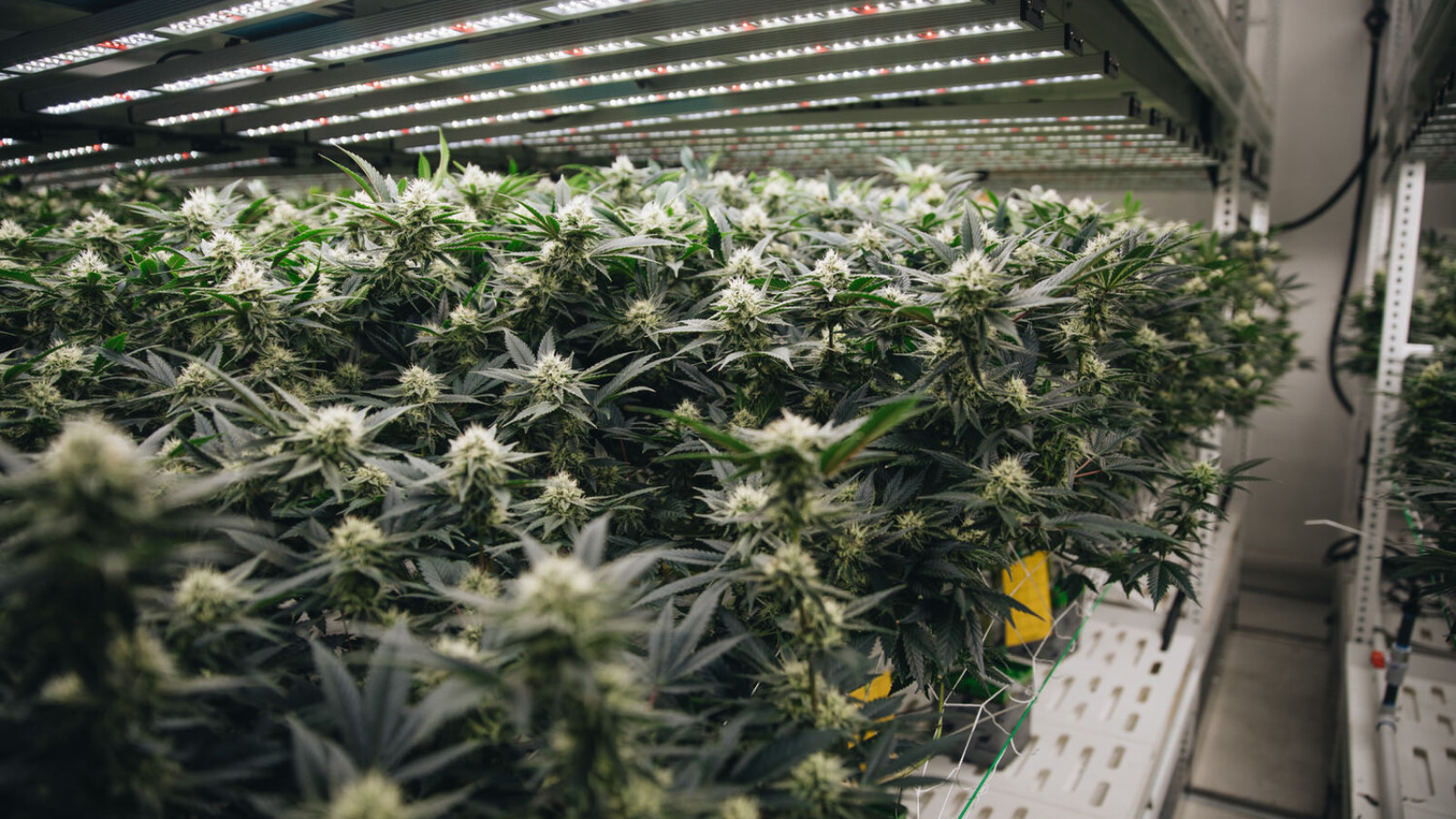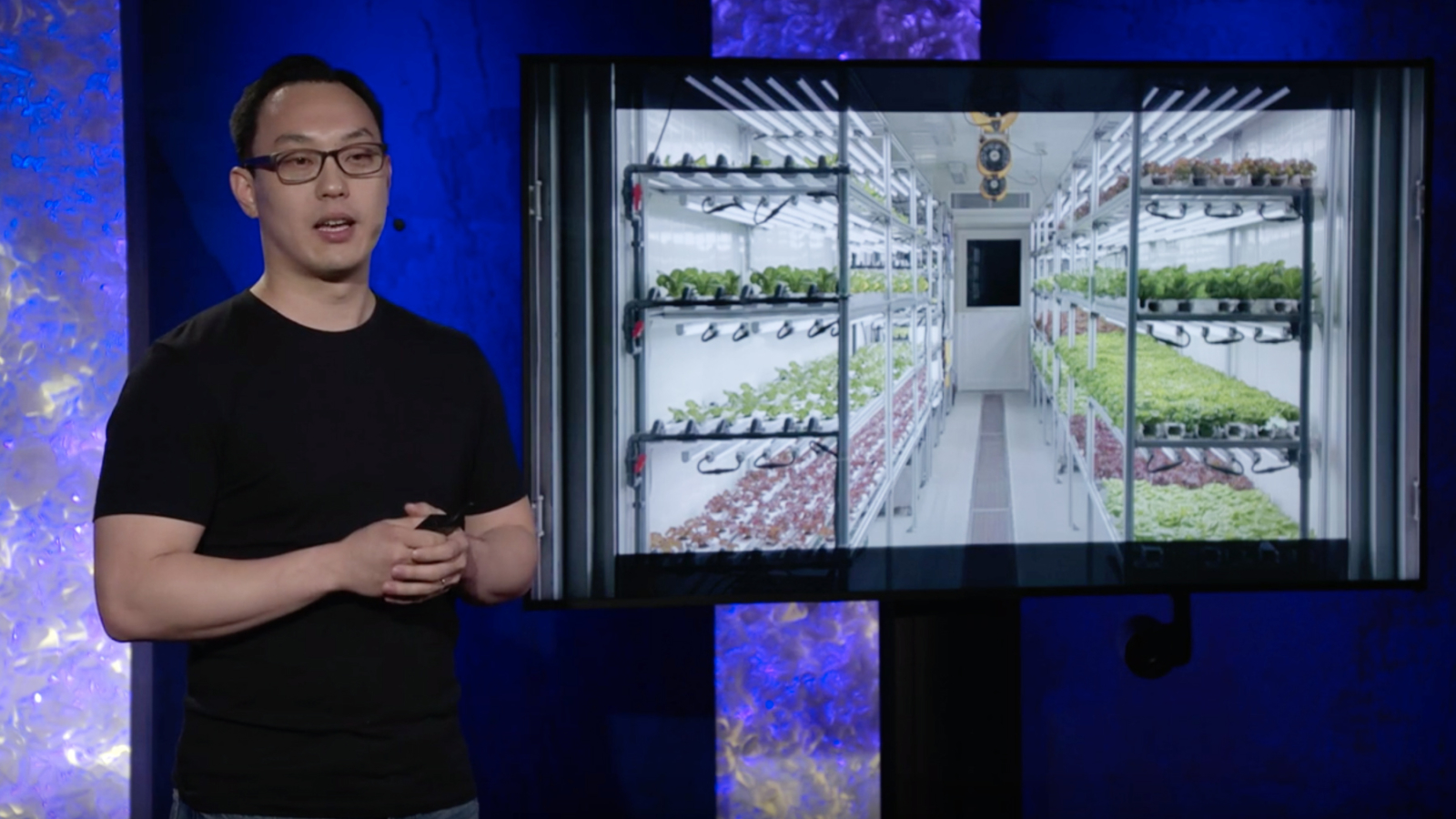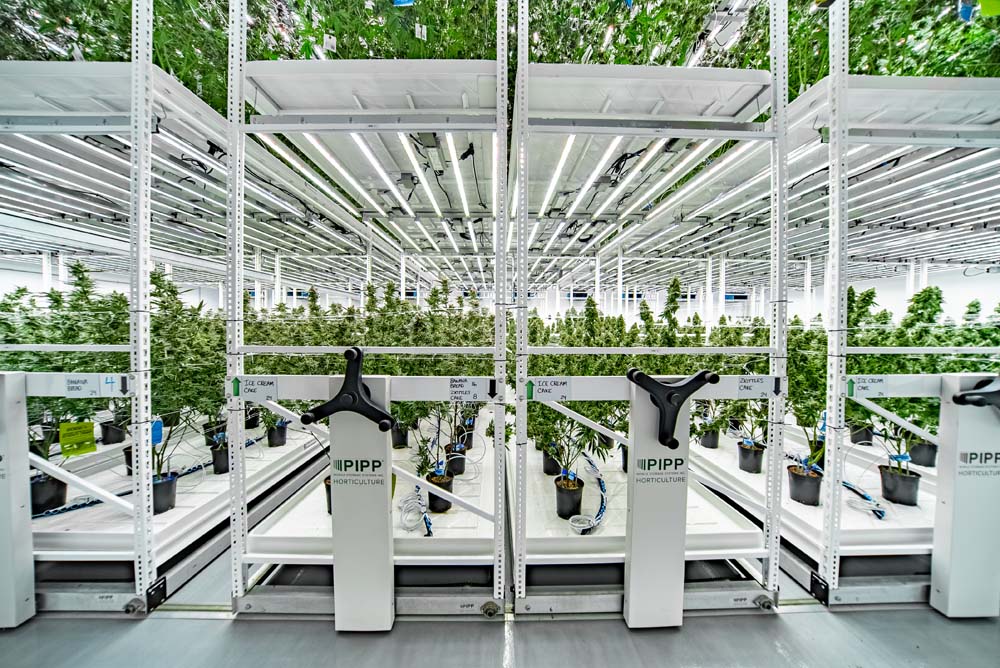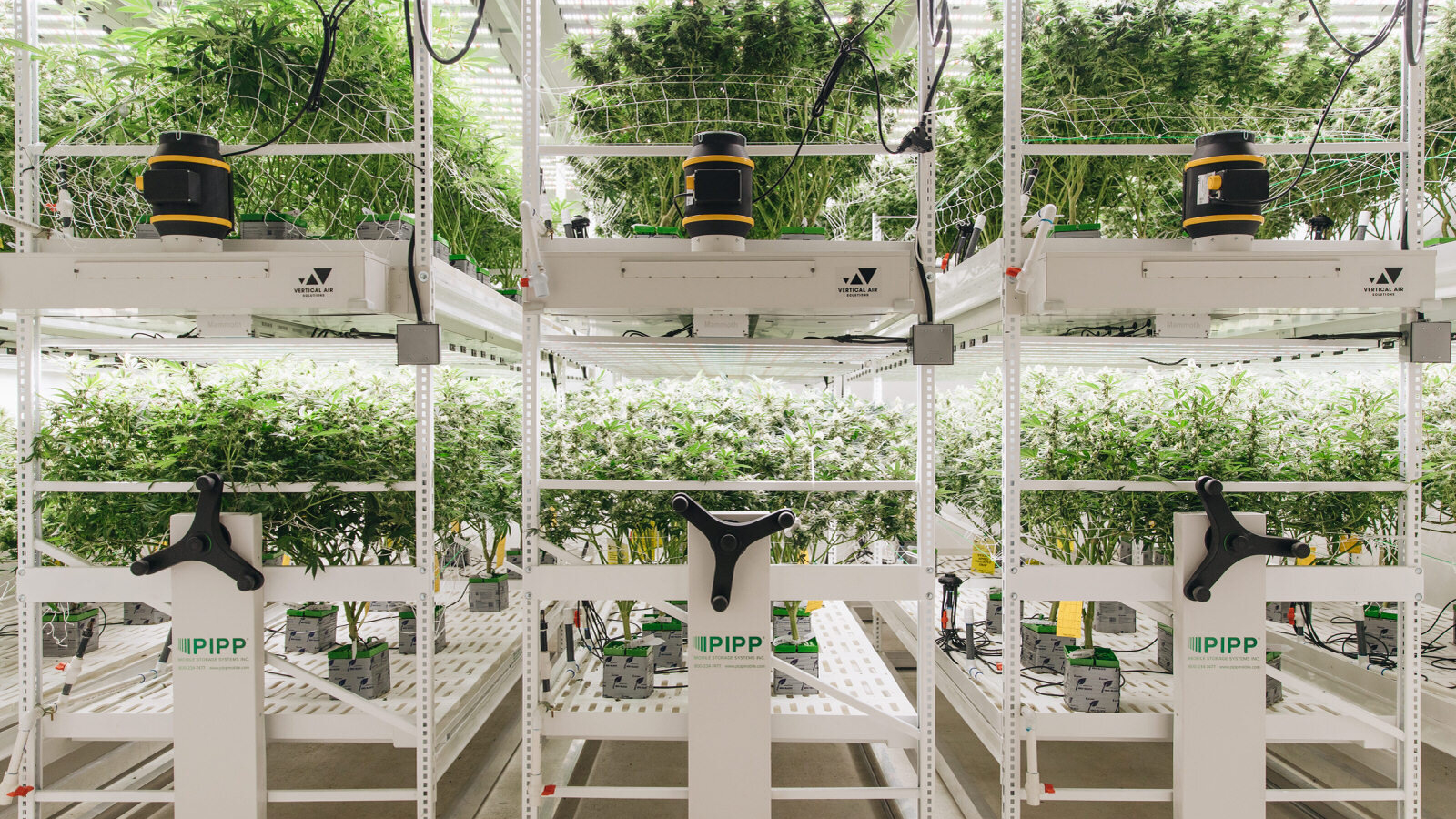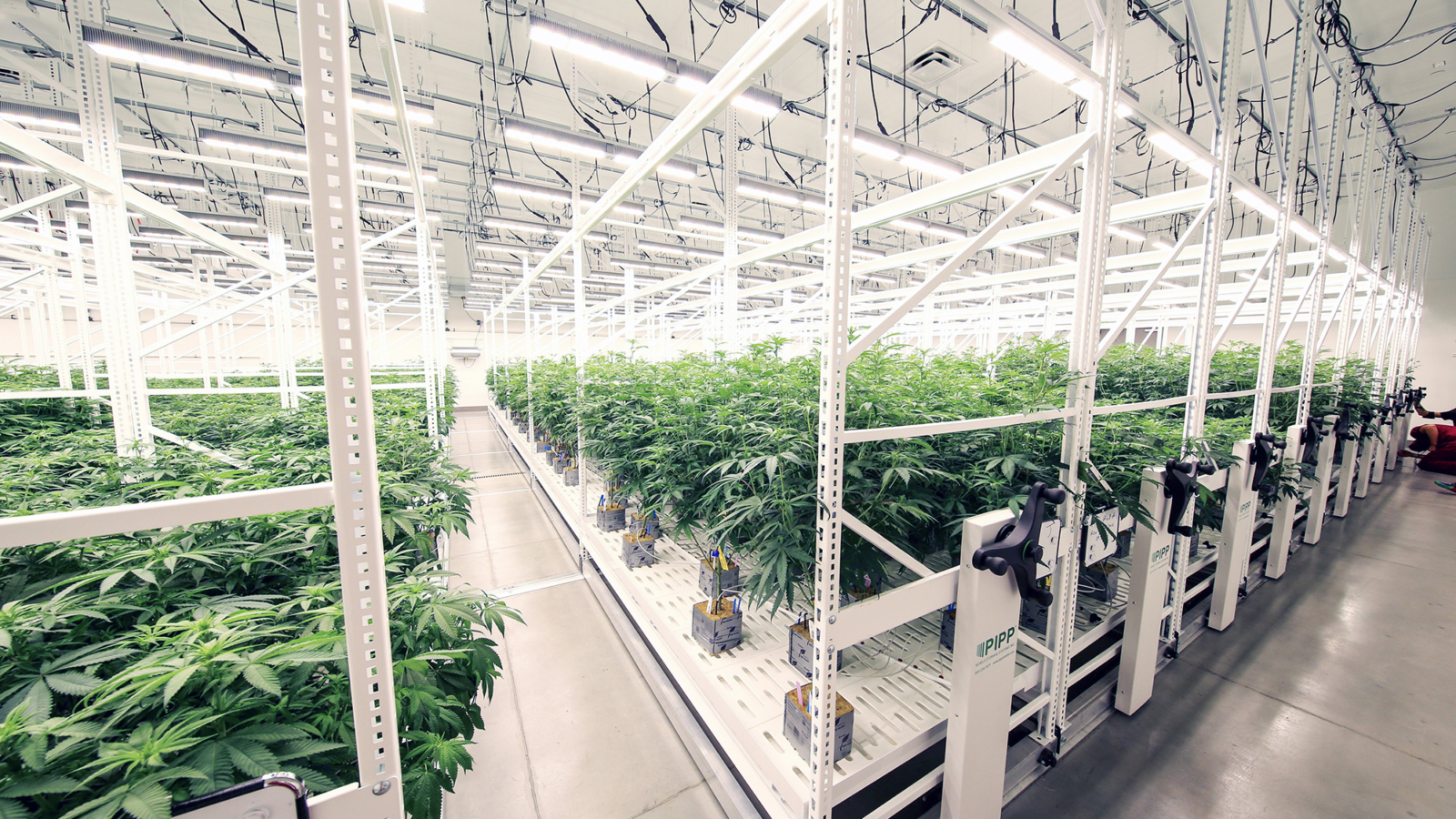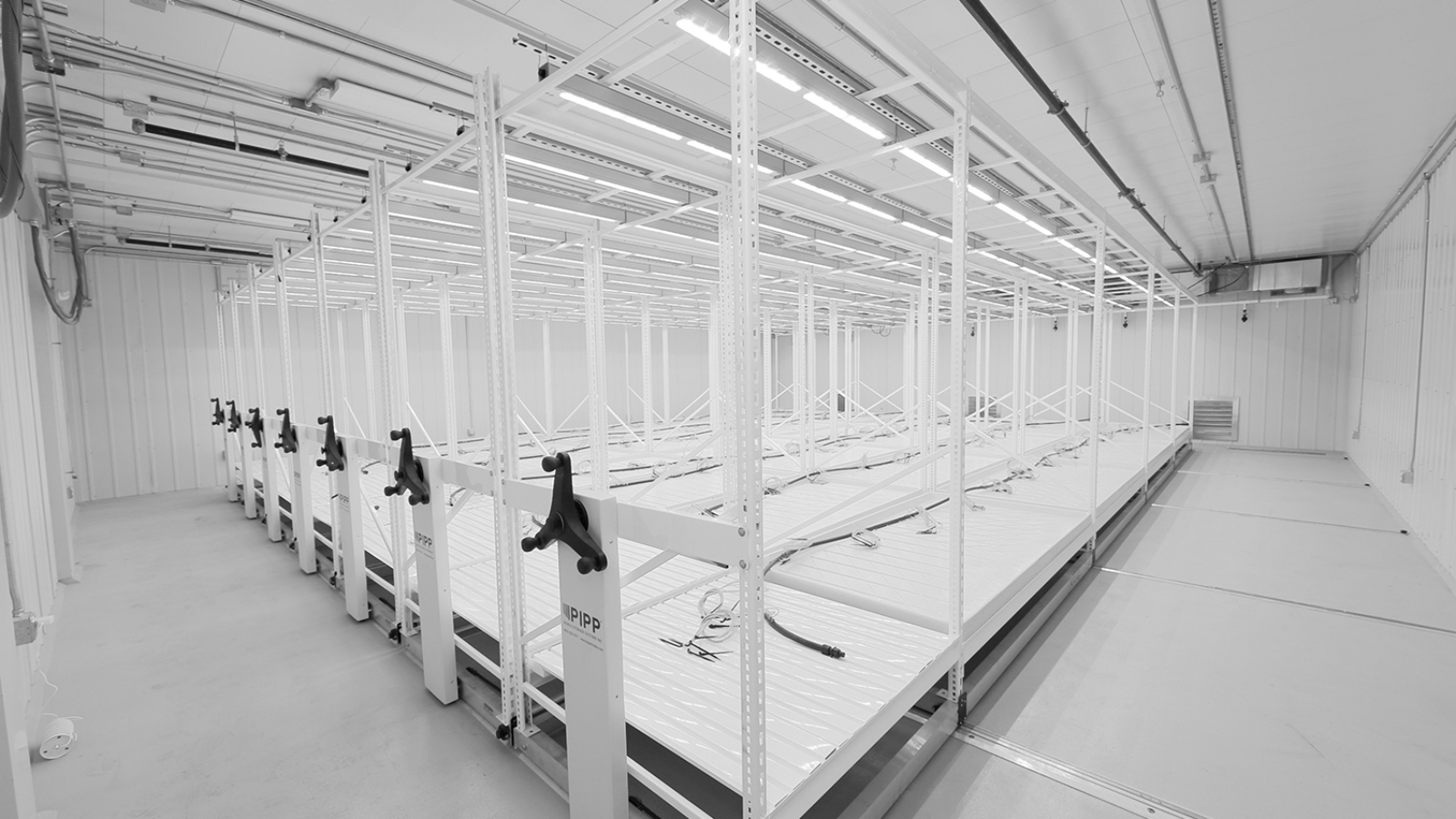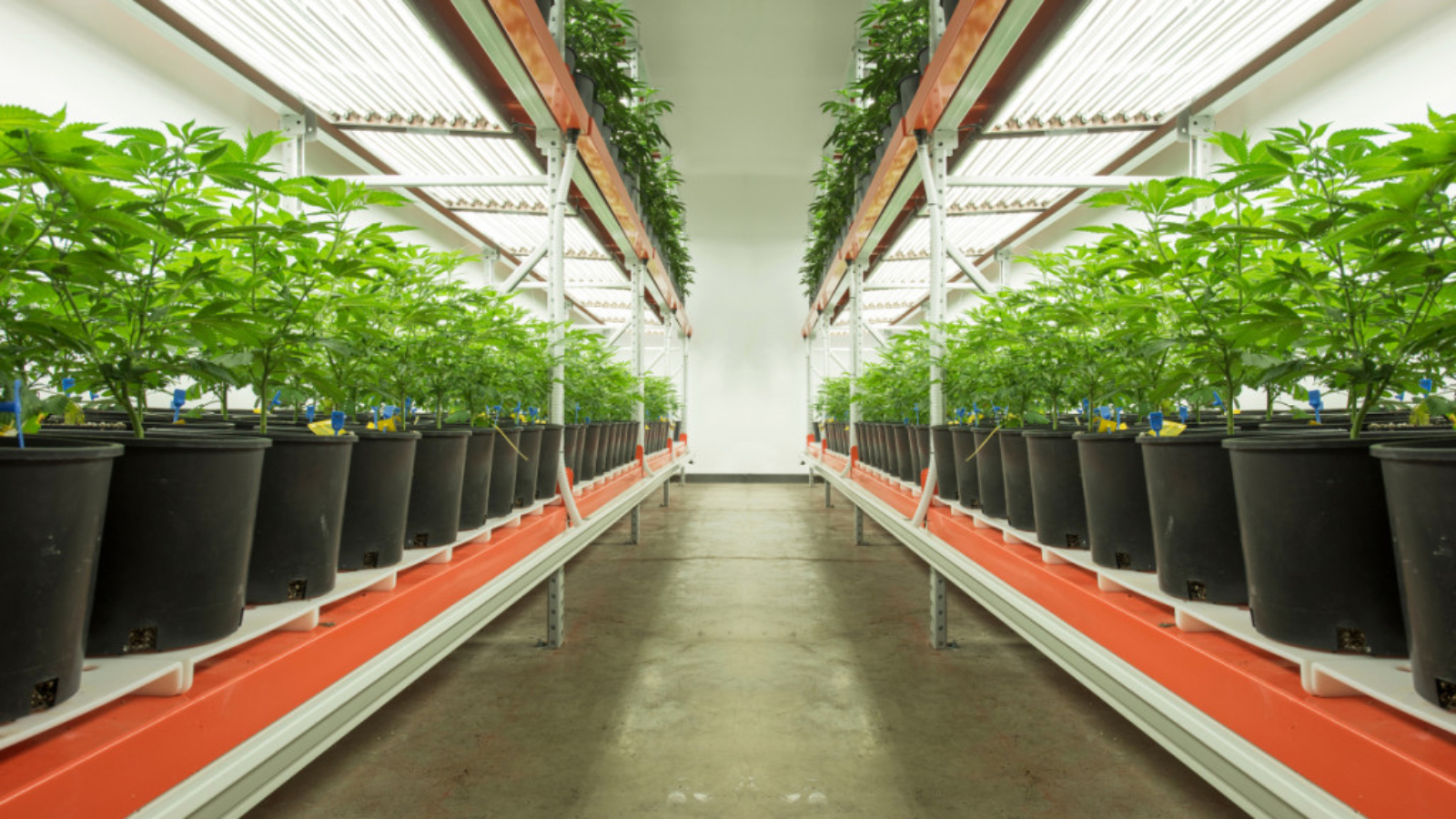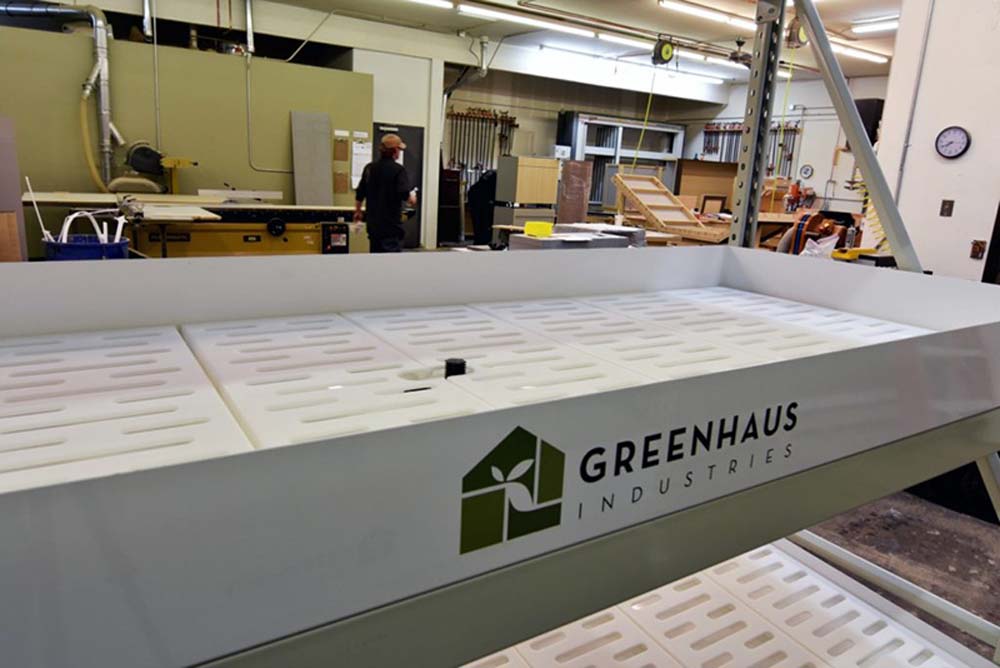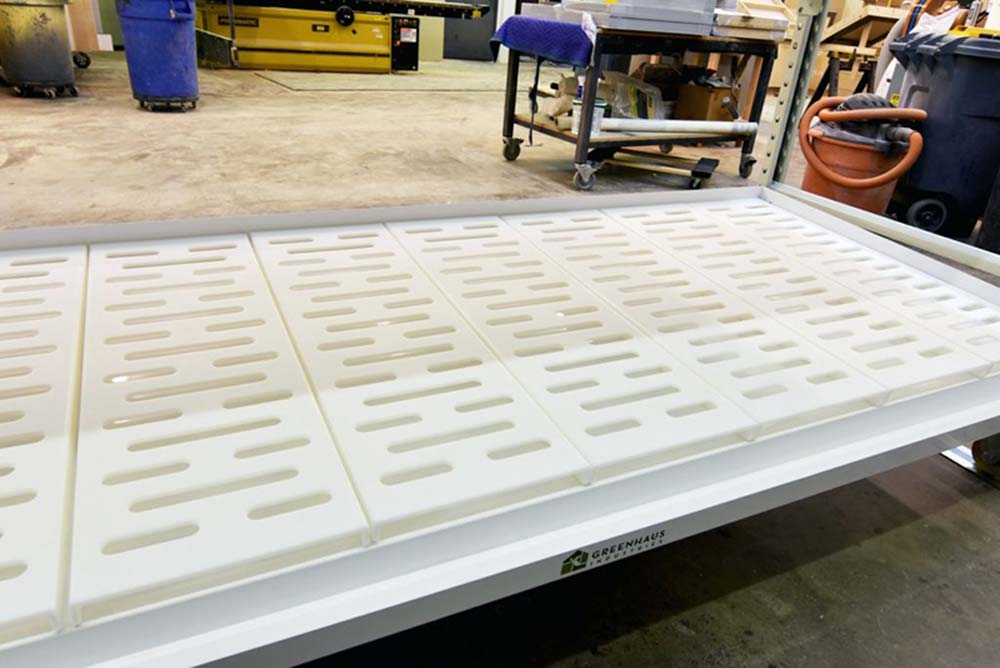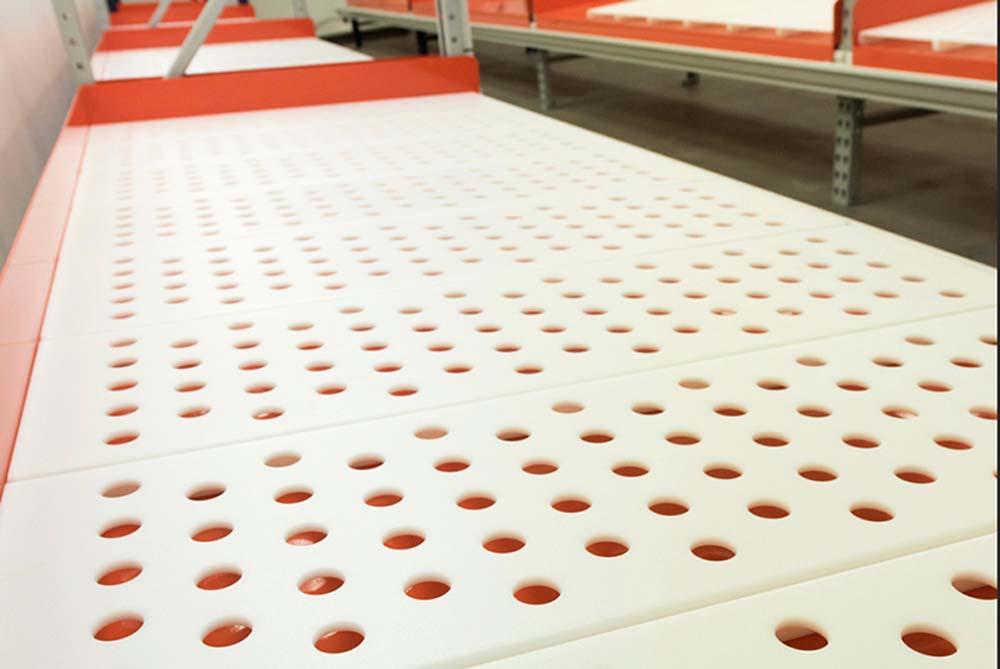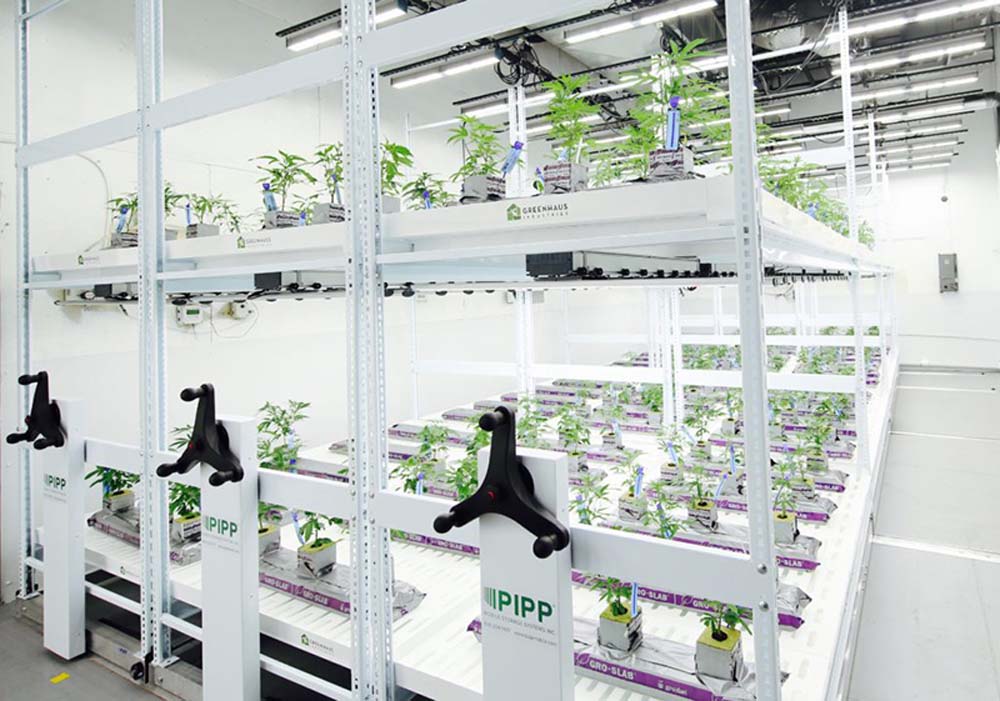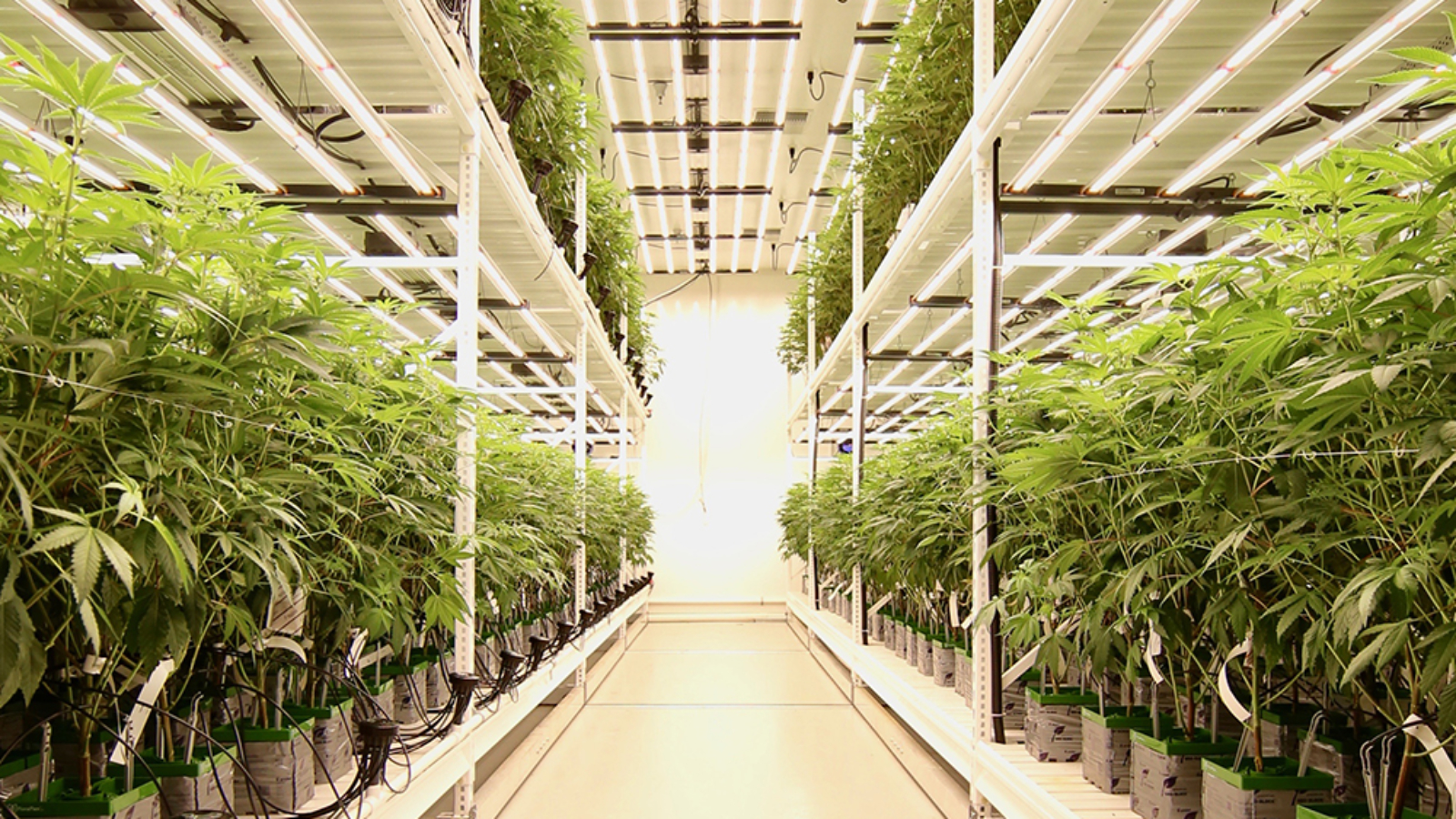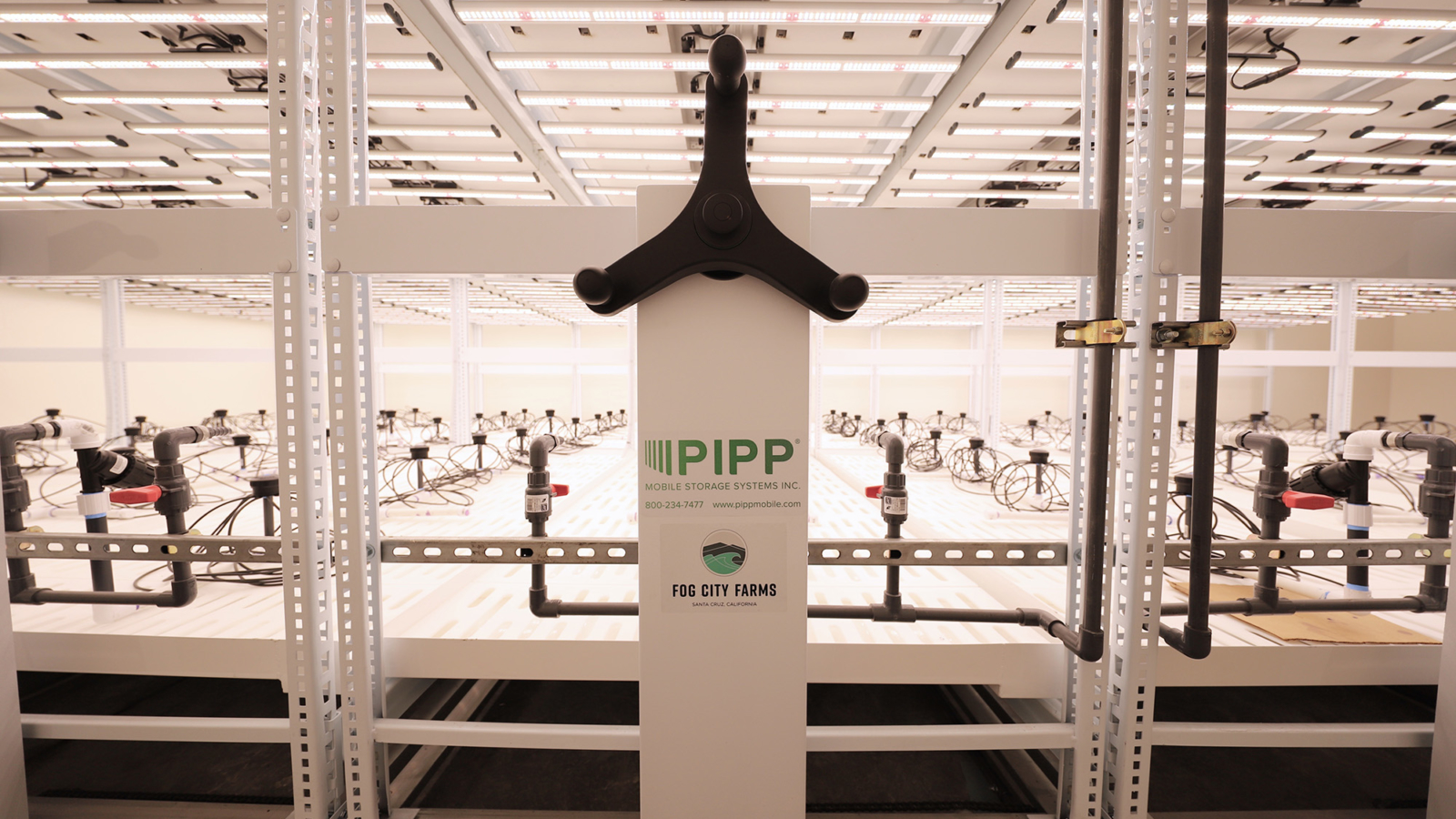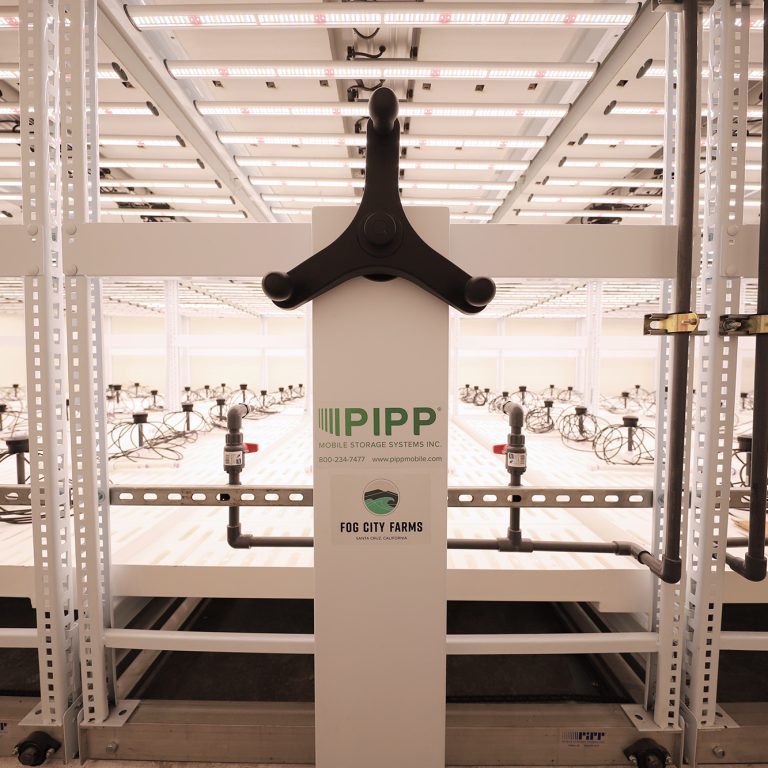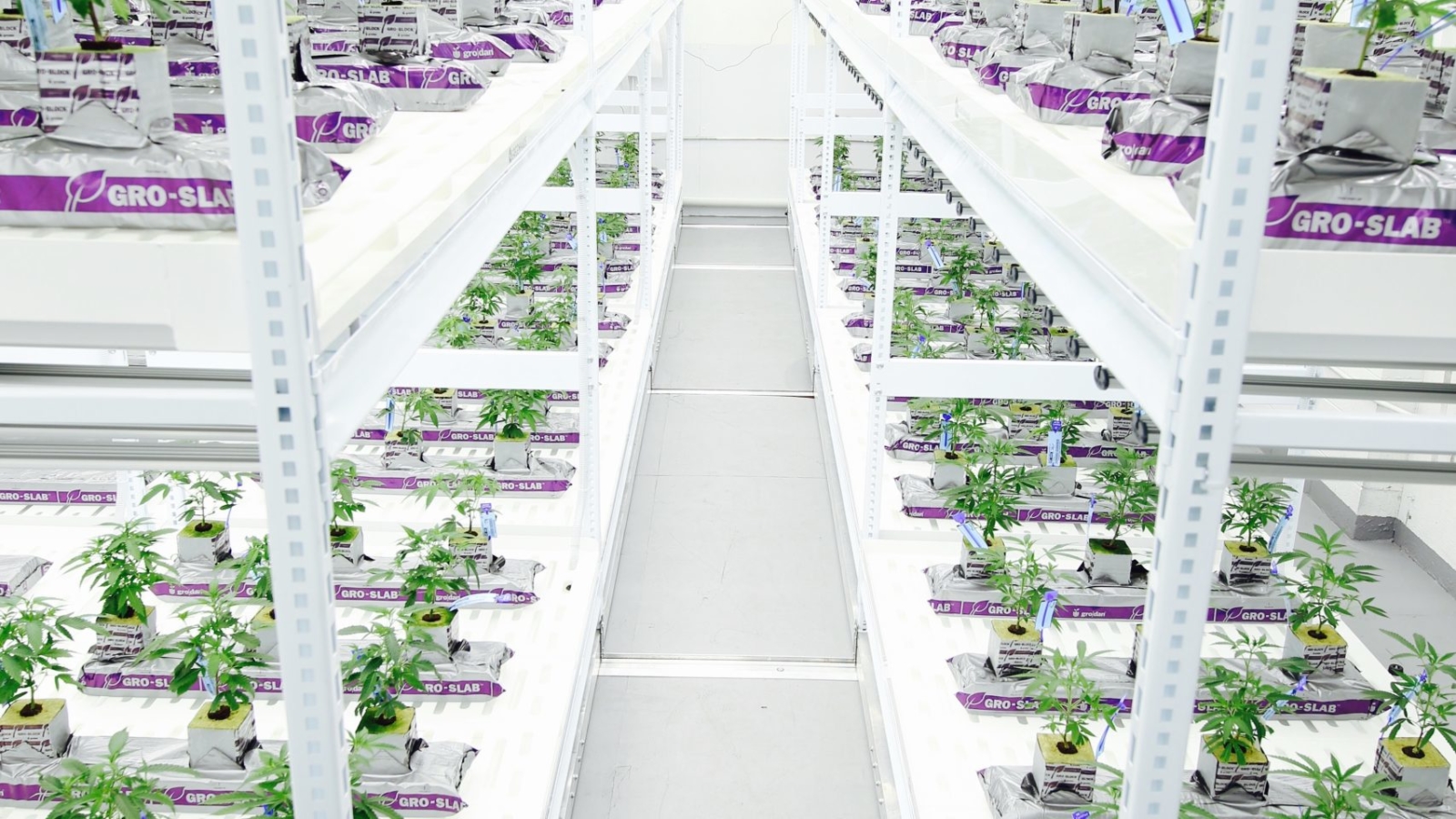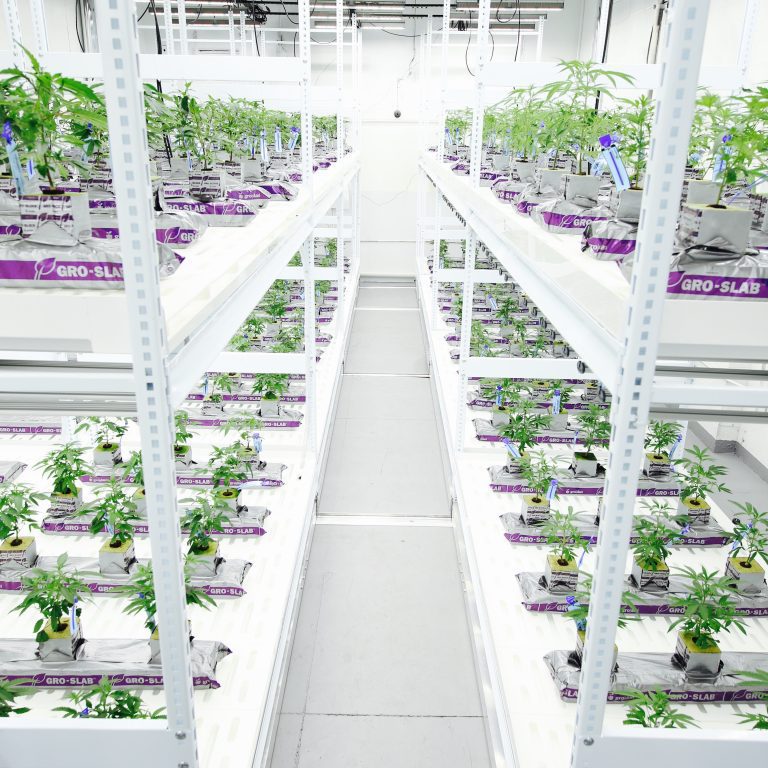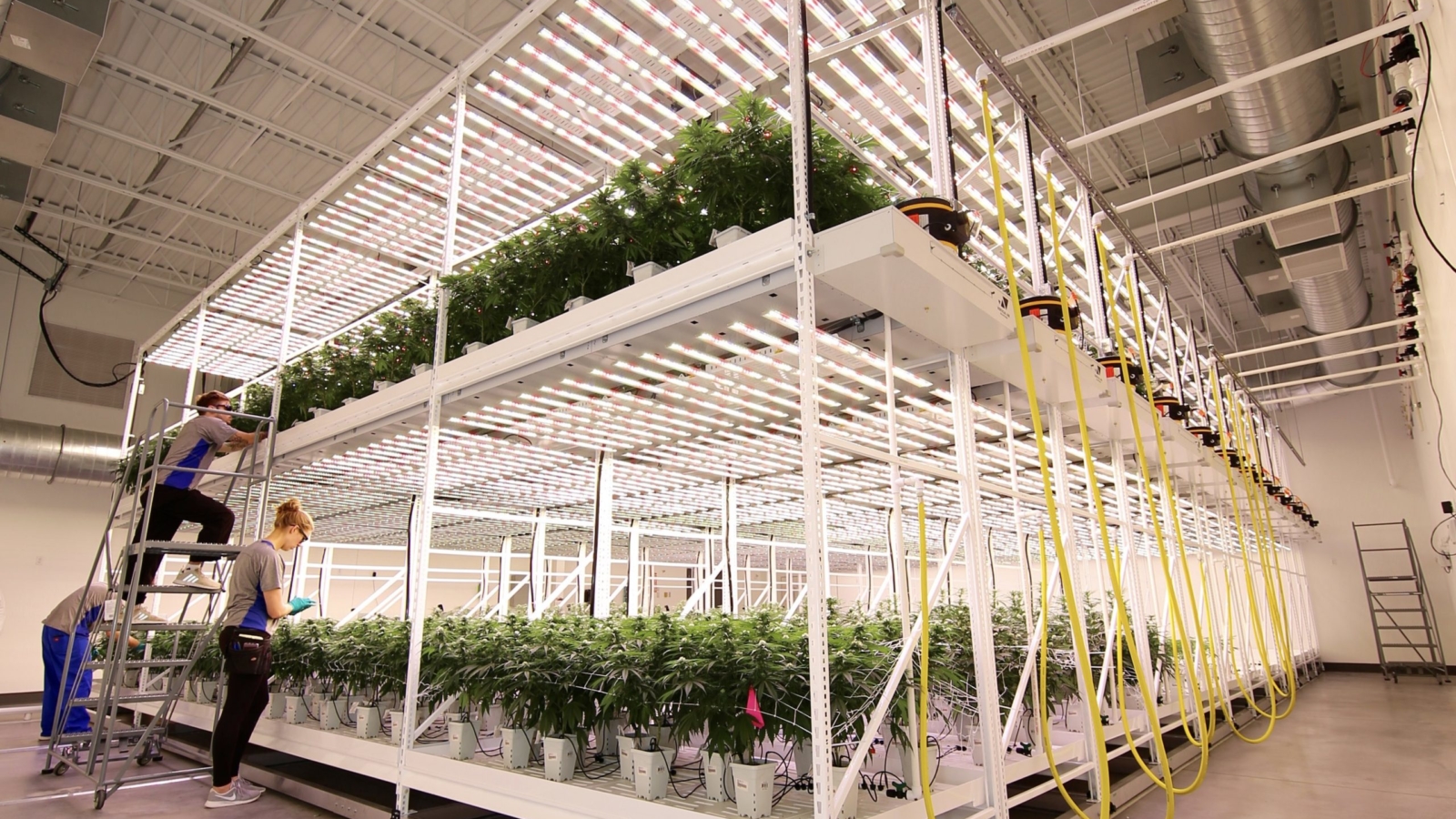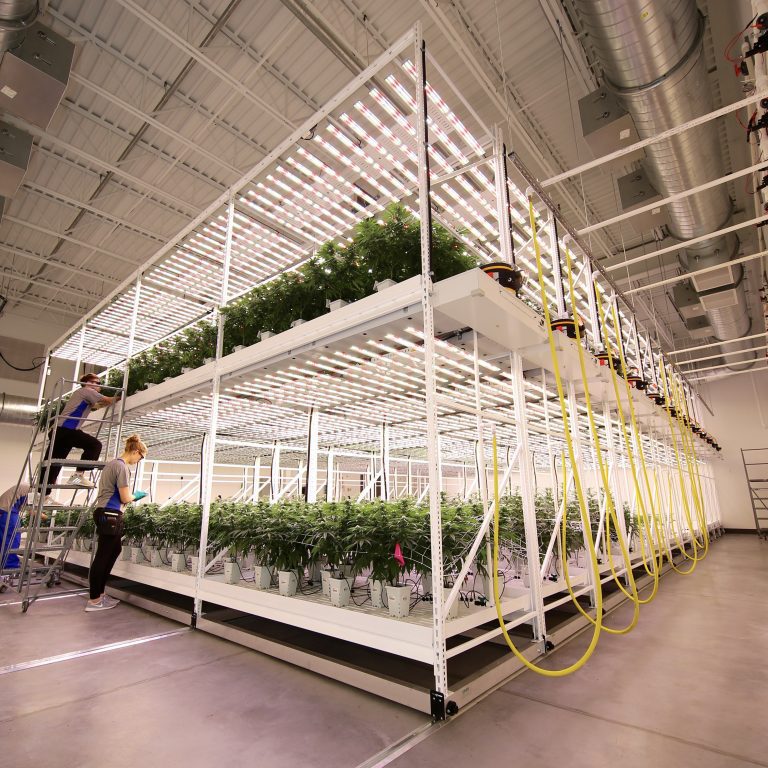Part 3: Integration with Advancing Environmental Control Technologies
In the first two parts of this series, we explored numerous advantages of implementing a Pipp Horticulture mobile
vertical racking solution in your grow. We started this series by first looking at the big picture of implementing a
vertical racking system: increasing canopy space to
reduce and absorb fixed costs. Cultivators maximize the space they have through the implementation of a mobile
vertical racking system, which means either requiring a smaller space initially and allowing for the cost of the cultivation space to be absorbed quicker or by producing substantially more in a fixed amount of space. Increasing canopy space without increasing square-footage may provide substantial benefit to cultivators operating in states with strict canopy space regulations.
Vertical racking also allows for greater absorption of the burdensome “canopy tax”, based off cultivation square-footage, that some cultivators have begun to face in recent years. In the second part of this series, we took an in-depth look at how implementing Pipp Horticulture mobile
vertical racking solutions will
lower the initial capital expense of environmental system requirements, as well as long-term energy consumption per gram.
Vertical racking systems typically utilize LED lighting, which may have a higher initial cost than HPS lights used in single-tiered cultivations, but the ROI on LEDs is typically faster than HPS, and they may require less maintenance and lower operating costs over time. Through the use of LEDs, HVAC requirements can be reduced and cost less to operate over time. Because LEDs emit less heat and require less energy than HPS lighting systems, environmental systems can stabilize quicker, thus reducing the fundamental needs of your HVAC system, as well as costs to operate over time. In the final installment of this series, we are going to explore further the types of environmental systems utilized with a Pipp Horticulture mobile
vertical racking solution, and how the technology of each can ensure success when integrated with a multi-tier system. Pipp Horticulture systems are designed to embrace and
integrate with the numerous technological advancements made in terms of lighting, irrigation, and other environmental controls, and utilize an in-house team of experts to ensure the client’s are aware of options to integrate third-party systems and technology to control environment, capture data and drive performance.
Seamless Integration with Environmental Controls
Many cultivators today are implementing automated environmental control systems that capture and utilize data to make minor adjustments to maintain an ideal environment to produce higher-quality, more consistent products. Each microclimate, which may be a tray, grow room, or greenhouse requires different inputs, consistent implementation, and monitoring of numerous
environmental variables such as:
Temperature and relative humidity – These factors are set, monitored, and maintained through HVAC and environmental control systems. It is essential to implement a system optimal for growing cannabis, which differs from standard HVAC systems in homes and office spaces. Growers looking to maximize outputs will regulate temperature and humidity to control , a key component of healthy plant growth. Maintaining consistent and optimal temperature and humidity throughout a plant’s life cycle can significantly improve performance and mitigate risk.
Lighting – Automated lighting can include timers, sensors, moving methods, and light meters. Systems must be reliable, efficient, and integrate with other environmental controls to provide the optimal amount of lighting required for
peak performance. Fertigation and Irrigation – Many cultivators have turned to automated fertigation systems, which are responsible for delivering precise amounts of nutrients to plants, and often integrate with irrigation systems. These high-tech systems ensure accuracy and
efficiency, reduce labor, and increase productivity in cultivations.
CO2 supplementation and concentration – Many cultivators supplement their plants with carbon dioxide which, when used correctly, can lead to quicker harvest times and larger yields. Typically, carbon dioxide is injected into the air and requires distribution with the
use of fans or other mechanical systems. Carbon dioxide levels should always be monitored to ensure plant health and employee safety.
Airflow – Adequate air circulation is necessary to create an
optimal growing environment. Airflow helps maintain temperature and humidity, prevents mold and pests, and can strengthen stems and stalks promoting an all-around healthier plant.
LED’s: An Advanced and Sustainable Lighting Solution
A significant component of
vertical racking systems that requires further exploration is the use of LED lights over industry-standard HPS lighting.
Vertical racking systems often utilize
high-density lighting, and because LED (light-emitting diode) lights produce low amounts of heat, making them ideal for close-range applications, and most commonly used in vertical grow systems. More efficient
light uniformity from LEDs allows cultivators to position lights closer to the plants, thus increasing the amount of light that penetrates the canopy and increases yields. Earlier generations of LEDs came up short when compared to HPS lighting; however, in recent years, technological advancements have addressed these shortcomings, and LEDs have come to surpass HPS technologically. What many cultivators may not realize is that much of the light emitted from HPS lights is waste, as plants do not absorb the unvarying light spectrum they provide. LED lights can target a particular light spectrum needed for photosynthesis, and by manipulating the range of light the plant receives and delivering that light with high precision,
LEDs can improve a cultivator’s yields and cannabinoid concentrations. Automation and control of lighting systems can recreate natural light cycles and control intensity to mimic sunrise and sunset. Not only does the implementation of LEDs in a
vertical racking system allow for improvement in plant quality, but it also provides a sustainable and environmentally-conscious solution for demanding lighting needs, as well as long-term savings on energy costs.
Cultivators around the globe are seeing the benefits of implementing mobile
vertical racking solutions to augment performance and efficiency throughout the entire cultivation facility. Not only are space and canopy increased, but there is a direct effect on the company’s bottom line by increasing revenue, providing for greater absorption of fixed costs, and a reduction of COGS as production increases. Utilizing advanced and automated technologies in areas such as lighting and environmental controls integrated with
Pipp Horticulture vertical racking provide cultivators with consistent, controllable, and replicable grow environments. While some of the cannabis industry is still operating single-tiered cultivations, operators that have implemented mobile vertical systems have set themselves up to remain competitive, maintain market share, and drive down costs while producing a consistent, high-quality, and high-yielding product.
